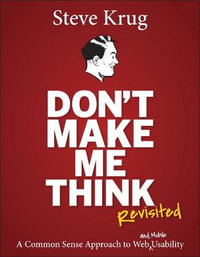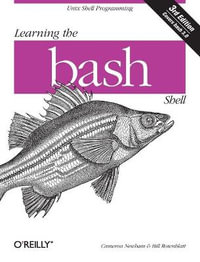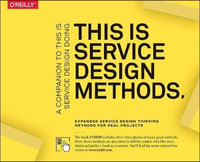| Contributors | p. xi |
| Introduction: Configuring User-Designer Relations: Interdisciplinary Perspectives | p. 1 |
| Introduction | p. 1 |
| The Chapters | p. 2 |
| The grammars of User-Designer Relations | p. 10 |
| References | p. 11 |
| Participatory Design: Issues and Approaches in Dynamic Constellations of Use, Design, and Research | p. 13 |
| Introduction | p. 13 |
| Participatory Design | p. 14 |
| Participatory Design Approaches | p. 16 |
| The Socio-Technical Approach | p. 16 |
| The Collective Resource Approach | p. 17 |
| MUST | p. 19 |
| Participatory Design in Corporate Research and Development | p. 20 |
| Related Approaches | p. 21 |
| Computer-Supported Cooperative Work and Workplace Studies | p. 21 |
| Science and Technology Studies | p. 22 |
| Participatory Action Research, Developmental Work Research, and Related Approaches | p. 23 |
| Moving Beyond Use, Design, Research, and Participation as 'a Matter of Course' | p. 24 |
| Conclusions | p. 25 |
| References | p. 26 |
| Design as and for Collaboration: Making Sense of and Supporting Practical Action | p. 31 |
| Introduction | p. 31 |
| Design for Collaborative Work | p. 33 |
| User-Designer Relations | p. 34 |
| Understanding Practice - 'Informing Design' | p. 35 |
| Ethnography for Design | p. 35 |
| Doing Ethnography for Design | p. 39 |
| Typifications and Patterns | p. 41 |
| IS Methodology: Prescription, Process, and Evolution | p. 43 |
| Design as Collaborative Work | p. 44 |
| Meshing Ethnography and Design Practice | p. 48 |
| Concrete Requirements and the Need for Change | p. 48 |
| Design Sensibilities and Ethnography | p. 49 |
| Conclusions: Innovation in Use, Envisaging the Future | p. 51 |
| References | p. 53 |
| User-Designer Relations in Technology Production: The Development and Evaluation of an 'Animator' Tool to Facilitate User Involvement in the Development of Electronic Health Records | p. 59 |
| Introduction | p. 59 |
| The National Programme for IT | p. 59 |
| Why were Problems of User Engagement Not Anticipated? | p. 61 |
| Participatory Design and Large-Scale Implementations | p. 62 |
| The Origins of the 'Animator' | p. 64 |
| Project Development | p. 65 |
| Development of the Animator | p. 66 |
| Evaluation | p. 70 |
| Animator Evaluation Questionnaire Summary | p. 71 |
| Focus Group Evaluation | p. 73 |
| Baseline | p. 74 |
| Post-Intervention | p. 74 |
| Summary of Results of Focus Group Discussions | p. 80 |
| Discussion and Conclusions | p. 81 |
| The Need for 'Meaningful' User Engagement | p. 81 |
| Animator-Assisted Mediation | p. 81 |
| The Animator in User-Designer Collaboration | p. 82 |
| Acknowledgements | p. 84 |
| References | p. 84 |
| Lessons Learned in Providing Product Designers with Use-Participatory Interaction Design Tools | p. 87 |
| Introduction | p. 87 |
| Initial Evaluation of a Card-Sorting Tool | p. 90 |
| Observations | p. 91 |
| Reflections on Study 1 and Changes for the Second Study | p. 95 |
| Card Sorting and Scenario Design Tools Managed by Designers | p. 97 |
| Observations | p. 100 |
| Reflections and Lessons Learnt from the Studies | p. 105 |
| Changing Designers' Attitudes towards PD Takes Time | p. 105 |
| Interaction Design Models are Critical to Participation | p. 106 |
| Organisational Credibility More Important than Experimental Rigour | p. 106 |
| Rules of Engagement Between Designers and Participants (and Researchers) Evolve Over Time | p. 107 |
| Conclusions | p. 108 |
| References | p. 108 |
| A Break from Novelty: Persistence and Effects of Structural Tensions in User-Designer Relations | p. 111 |
| Reinvented Wheels and Real-Life Concerns in User-Designer Relations | p. 111 |
| Persistence of Structural Patterns in User-Designer Relations | p. 112 |
| Historical Continuities in Present Day Concerns: Two Cases of Health care Technology | p. 117 |
| The PDMS Develoment Project: Why Does PD Wane in the Wild? | p. 118 |
| Outline of the Wristcare Innovation Process | p. 120 |
| Examining the Commonalities in User-Designer Relations of the Two Cases | p. 124 |
| Small Steps That May Make a Difference | p. 126 |
| Conclusions | p. 127 |
| References | p. 128 |
| Practicalities of Participation: Stakeholder Involvement in an Electronic Patient Records Project | p. 133 |
| Introduction | p. 133 |
| A National Health Service (NHS) Trust | p. 135 |
| Delivering the Electronic Patient Record | p. 136 |
| Setting, Study, and Method | p. 137 |
| Managing Participation and Understanding Work Practice | p. 138 |
| Getting a Project to Work | p. 138 |
| Keeping Users in Mind | p. 142 |
| Escalating Problems | p. 145 |
| Keeping Track of Issues | p. 147 |
| Domestication and Legacy Systems | p. 148 |
| Discussion: Project Work and Organisational Issues | p. 150 |
| Conclusions: The Practicalities of Participation and Socio-Technical Design | p. 152 |
| Acknowledgements | p. 154 |
| References | p. 154 |
| Bottom-up, Top-down? Connecting Software Architecture Design with Use | p. 157 |
| Introduction | p. 157 |
| Challenges to Assembling Infrastructure, Applications, and Services | p. 162 |
| Gaining a Sense of How Assembly Could Be Achieved in a World Where Applications/Services Do not yet Exist | p. 163 |
| Challenges | p. 168 |
| Assemblies | p. 169 |
| Basic Assemblies | p. 169 |
| Assemblies as Service Composition | p. 177 |
| Inspection and Awareness of Resources | p. 184 |
| Pulling Things Together | p. 187 |
| References | p. 189 |
| Global Software and its Provenance: Generification Work in the Production of Organisational Software Packages | p. 193 |
| Introduction | p. 193 |
| Narrative Biases in STS: Localisation | p. 196 |
| From Importing to Exporting | p. 197 |
| The Studies | p. 199 |
| Birth of a Package | p. 200 |
| Accumulative Functionality | p. 200 |
| Management by Community | p. 202 |
| Community Management Strategies | p. 202 |
| Witnessing | p. 203 |
| Management by Content | p. 204 |
| The Organisationally Particular | p. 206 |
| Smoothing Strategies | p. 207 |
| From Generification to Generifiers | p. 207 |
| Segmenting the User Base | p. 208 |
| Promising Future? | p. 211 |
| Opening the Black-Box (and Finding a 'Black-Blob') | p. 213 |
| Conclusion: Black-Blobs Travel Better Than Black-Boxes | p. 214 |
| Acknowledgements | p. 216 |
| References | p. 216 |
| Concluding Remarks | p. 219 |
| Introduction | p. 219 |
| A Taxonomy of PD Practices Revisited | p. 220 |
| Context of Engagement | p. 221 |
| Timing of Engagement | p. 221 |
| Scale of Engagement | p. 222 |
| Purpose of Engagement | p. 222 |
| User Experience | p. 223 |
| Summary | p. 223 |
| A Collaborative Endeavour | p. 224 |
| User Engagement in the Wild | p. 225 |
| Taking User-Designer Relations Forward | p. 227 |
| References | p. 230 |
| Index | p. 233 |
| Table of Contents provided by Ingram. All Rights Reserved. |
























